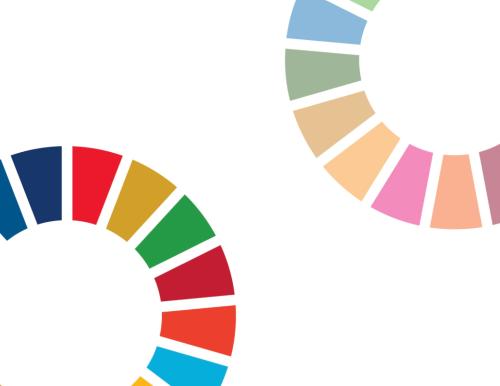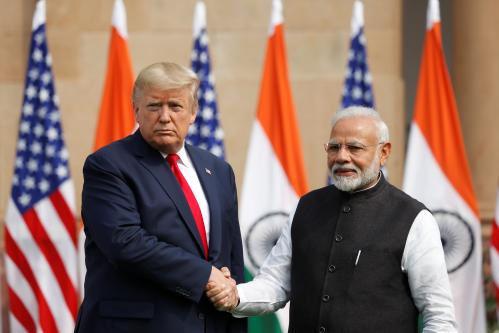Urban dwellers on the East Coast and Northern Californians typically don’t have a lot of nice things to say about Greater Los Angeles. Most complaints are of the “it’s a big sprawling mess” variety. The city and region grew so rapidly from the mid- to late-20th century, and so dependent on the automobile, that it seems to take at least 45 minutes to reach any destination in the metropolitan area.
For a minute, though, picture a very different Greater Los Angeles: one beset by inter-ethnic violence equivalent to a Watts riot every single week; with half its residents living in illegally built homes and squalid communities; lacking basic infrastructure of all sorts; losing children from its schools to its factories at the age of 10; and with no municipal government. Oh, and sustaining massive floods every single year.
Escape from L.A.? Not exactly. That troubled place is the subject of NPR Morning Edition host Steve Inskeep’s vivid new portrait, Instant City: Life and Death in Karachi.
Inskeep tells the story of a nation—a relatively new one, created from the partition of India after the British relinquished control in 1947—from the vantage point of its largest, most economically vibrant, and most complicated city. In contrast to much of what Americans write about Pakistan these days, though, this book is not about our country’s diplomatic or military relationship with Pakistan. It’s really about Pakistan’s frequently tortured relationship with itself, as revealed in the travails of a metro area that has grown by an average of 2 million people per decade since 1950.
Given all its challenges, it’s stunning that Karachi has grown so rapidly, and continues to do so today. As Inskeep points out, it shares this feature in common with a number of other troubled “instant cities” in the developing world—like Lagos, Nigeria—that have grown more than ten-fold in recent decades. Like them, Karachi seems to lack the basic elements that fuel the growth of cities elsewhere:
- The innovative capacity of Karachi is heavily circumscribed by the lack of rule of law and the dominance of the military in commercial affairs. As one local corporate executive tells the author, “[Military contractors] buy equipment under the military rules, which is free of any import tax, and come and compete with the private sector.”
- Karachi’s infrastructure cannot meet the basic housing and transportation needs of its own labor market. Suburban communities planned in the 1950s provided inadequate affordable housing and commuting options to job centers; illegal developments and slum housing blossomed throughout the metropolitan area in economically isolated communities. The city’s residents and businesses also lose electricity for several hours each day.
- Human capital in other cities is strengthened from the interactions of skilled workers in enterprises and clustered industries, especially people from somewhat different backgrounds and perspectives who help each other to solve problems in new ways. The city’s loss of highly-educated Hindus after the partition, deep-seated conflict among different Muslim sects and regional ethnic groups, and a fundamentally small-business economy, greatly dampen these interactions and learning in Karachi.
- Karachi’s quality of place—the locations in which its citizens gather collectively for commerce or leisure—is under constant threat. Inskeep organizes his narrative around a terrorist bombing of a parade through old Karachi and the subsequent looting and arson of a historic marketplace. He also relates the story of an activist murdered while trying to defend Karachi’s national park from the encroachment of developers abetted by the government.
Karachi’s growth is not due to strong fundamentals in any of these areas, but effectively forced migration: of Muslims from India to Pakistan after the partition; and of Pakistanis from desperately poor and religiously ultra-conservative areas in the countryside who manage to eke out a slightly better existence in the city.
What’s ultimately most compelling about Inskeep’s effort, though, is not analysis of why or how Karachi is failing or succeeding as a city, but instead the collection of protagonists he assembles who reveal Karachi in all its complexity. Especially memorable are the founder and long-time operator of the city’s extensive, privately-operated ambulance fleet who barely ekes out a living for himself and his wife; the nightlife impresario whose dreams of a new Beirut on the Arabian Sea foundered amid power shifts in the national government; the successful chief executive of a communications company who left to begin building high-quality housing and communities for Karachi’s poor; and the hard-charging young mayor of Karachi who had trouble overcoming the frustrations of dealing with ethnic political parties.
Although I’ve never been to Karachi, it was in reading Instant City that I remembered I had met that young mayor, Mustafa Kamal. He came to Brookings a year or two ago, probably not long before he lost his seat when Pakistan’s local government law expired. I recalled that occasionally he would send emails to acquaintances from his travels to America and elsewhere, and I read through my archives to see if the missives made more sense in light of the urban portrait I’d just read. The same hope that Inskeep expresses in his last chapter—that Karachi’s remaining ethnic and religious diversity could be made “an asset in a world that is fractured along religious lines”—is palpable in Kamal’s emails, which come every few weeks, after yet another terrorist tragedy has struck his city.
Perhaps Los Angeles, America’s instant city of the late 20th century, and its greatest melting pot, has something important to admire. Inskeep’s book thus provides a powerful reminder that to truly understand a nation, one must understand its great cities, warts and all.
The Brookings Institution is committed to quality, independence, and impact.
We are supported by a diverse array of funders. In line with our values and policies, each Brookings publication represents the sole views of its author(s).


Commentary
Urbanity Now: Karachi As “Instant City”
November 11, 2011